I wanted to eat the air. I think that's a first for me.
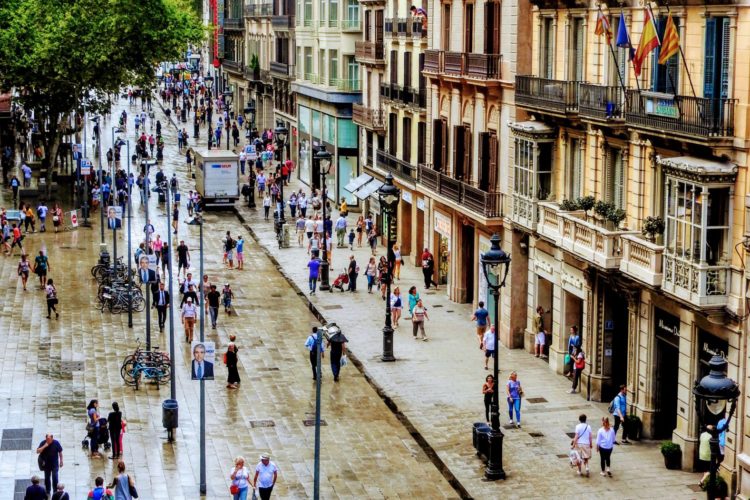
Please, don’t be afraid of Barcelona!
About this time last year, when I was researching my upcoming trip to Spain and obsessively reading travel blogs, it quickly became apparent that Barcelona has a bit of reputation—as in PREPARE TO BE PICKPOCKETED! PREPARE TO BE SCARED AT ALL TIMES!
Okay, maybe that’s an exaggeration, but not by much. Everybody and their Aunt Edna seems to have a negative story about Barcelona, and those stories mainly concern stolen wallets, phones, and even passports.
Now, normally, I wouldn’t worry too much about something like that. I’m an experienced, reasonably savvy traveler and do my best not to call attention to myself. Also, I grew up in a major metropolitan area, with its own pickpocket-happy reputation, and had habits like “always keep a death grip on your purse,” ingrained since toddlerhood. I’ve traveled to other supposed pickpocket meccas such as Paris, Rome, and St. Petersburg, without incident.
But one thing about the Barcelona bashing gave me pause: some of the warnings came from veteran professional travelers. In other words, there were people out there who had gone all over the world, done things that I would never be brave enough to do, experienced setbacks that would likely have me scurrying beneath the nearest rock, and Barcelona made them edgy. Now I was nervous.
So nervous, in fact, that I altered my plans so as to spend the first two days of my trip an hour away in Girona before braving Barcelona. My reasoning here was that it wouldn’t do to be jet lagged, and thus extra vulnerable, in this apparently predatory city.
Yeah. My mistake.
The mistake wasn’t spending two days in Girona. Girona is beautiful and interesting, and, indeed, a very pleasant and laid back place to acclimate. This was especially welcome since, along with a nasty bout of jet lag, I developed a bad cold, and putting off Barcelona—where I would be tempted into a frenetic sightseeing schedule, wasn’t such a bad idea. No, the bad idea was letting myself get so freaked out by others’ experiences that I undermined my own.
Walking from the train station to my hotel near the Plaça de Catalunya, I was seized by a feeling of slightly embarrassed relief, as I thought, “oh, it’s just a big city. What was I so afraid of?”
Barcelona is great. Yes, it’s a big city, with all the dirt, noise, crowds, and petty crime that can come with that. And that’s not everybody’s cup of tea. But it’s also an amazing experience, especially visually. The whole city is a work of art, whether planned or accidental.
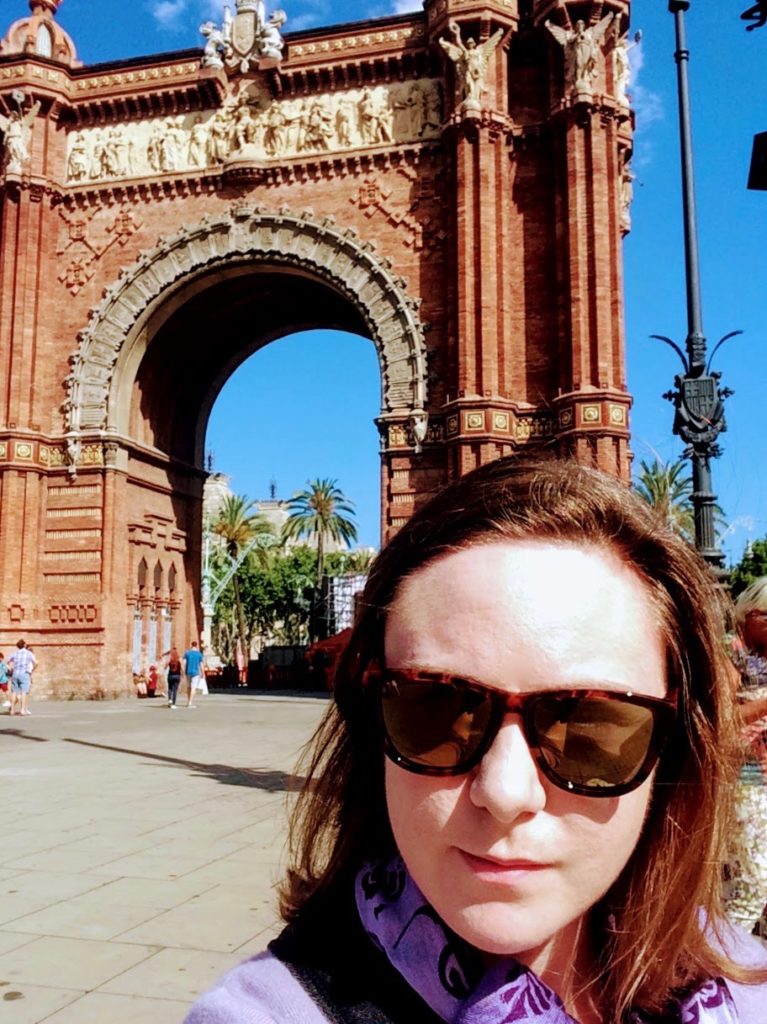
Five hours after arriving in Barcelona and scowling because I’d already figured out how much I’d overreacted.
La Rambla (or Ramblas, as its often called) is a large pedestrian boulevard that leads down to the harbor. It is also notorious for its pickpockets. But that’s no reason to avoid it. In good weather, it is lined with stalls and populated with street performers. Touristy? Sure. But it’s also fun and a great place to people-watch. So zip up your wallet in an inside pocket, keep a good grip on your camera, and enjoy the show.
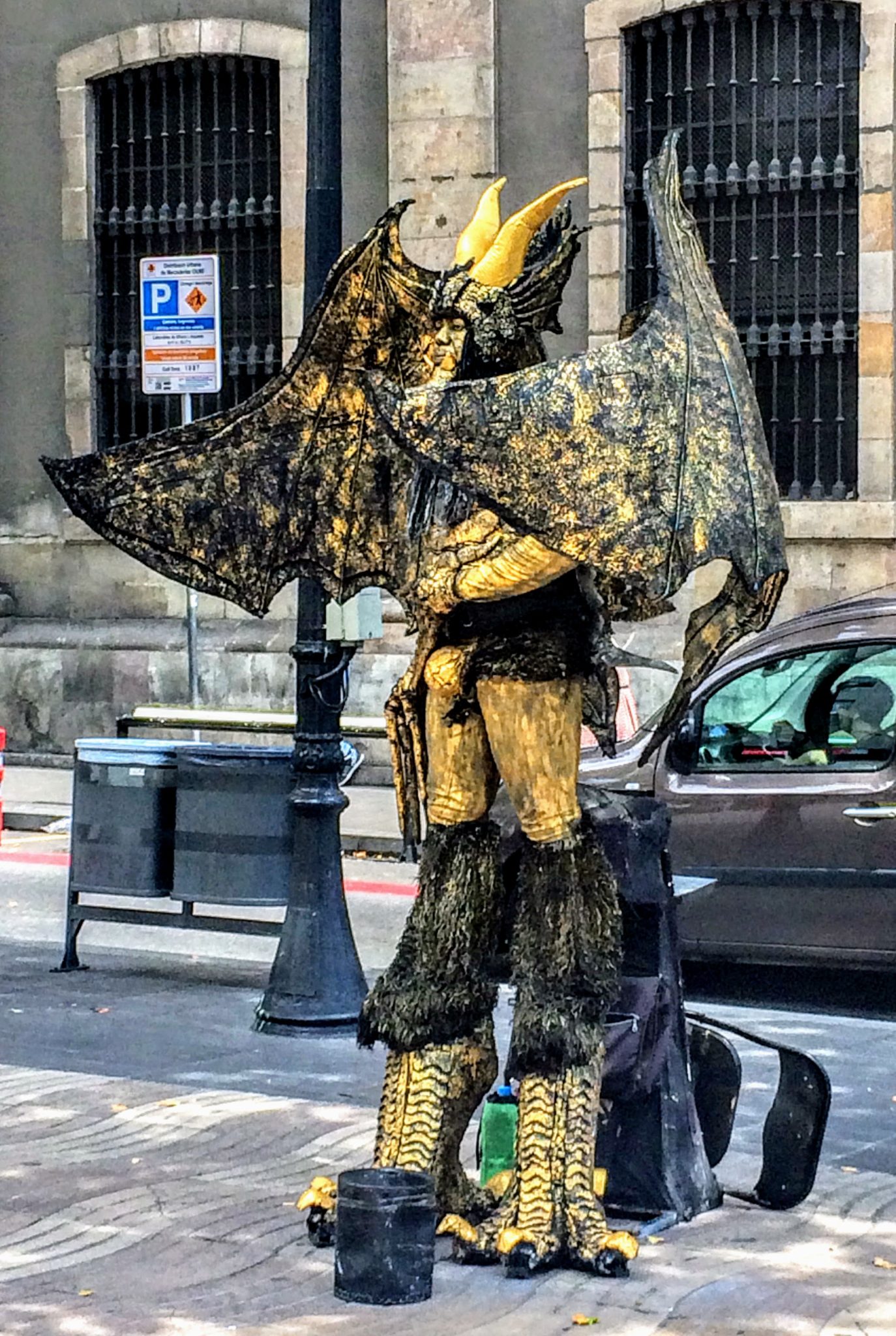
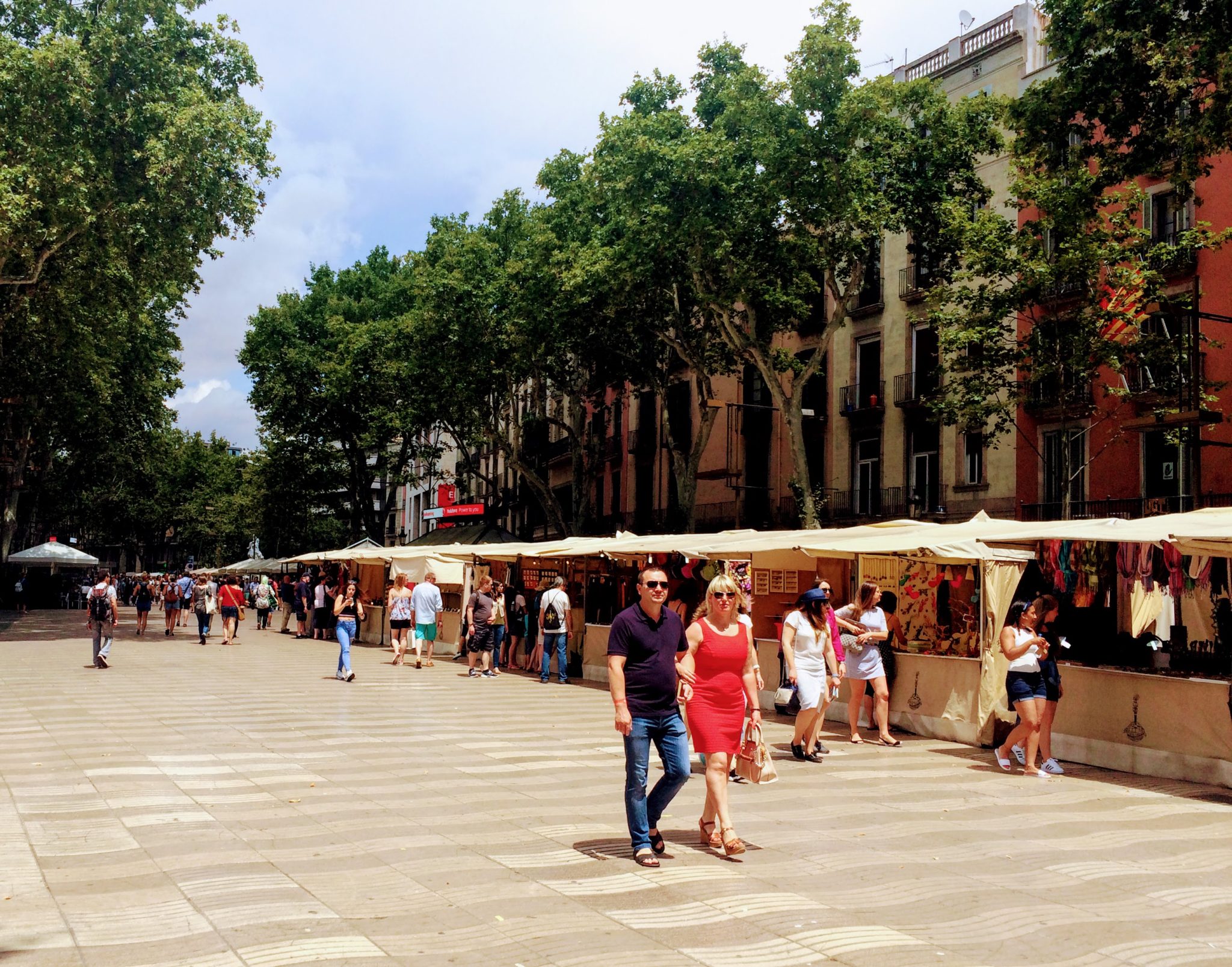
La Rambla at 1:15 pm on a Friday in June. Tourist season, but not quite the frightening mob scene I had been expecting.
In the old medieval city, the Barri Gòtic, there is something beautiful, or historic, or just plain quirky, to see around every twisty corner. Don’t go in with a plan, wander about and see what you find. Just be smart and don’t wander aimlessly late at night.
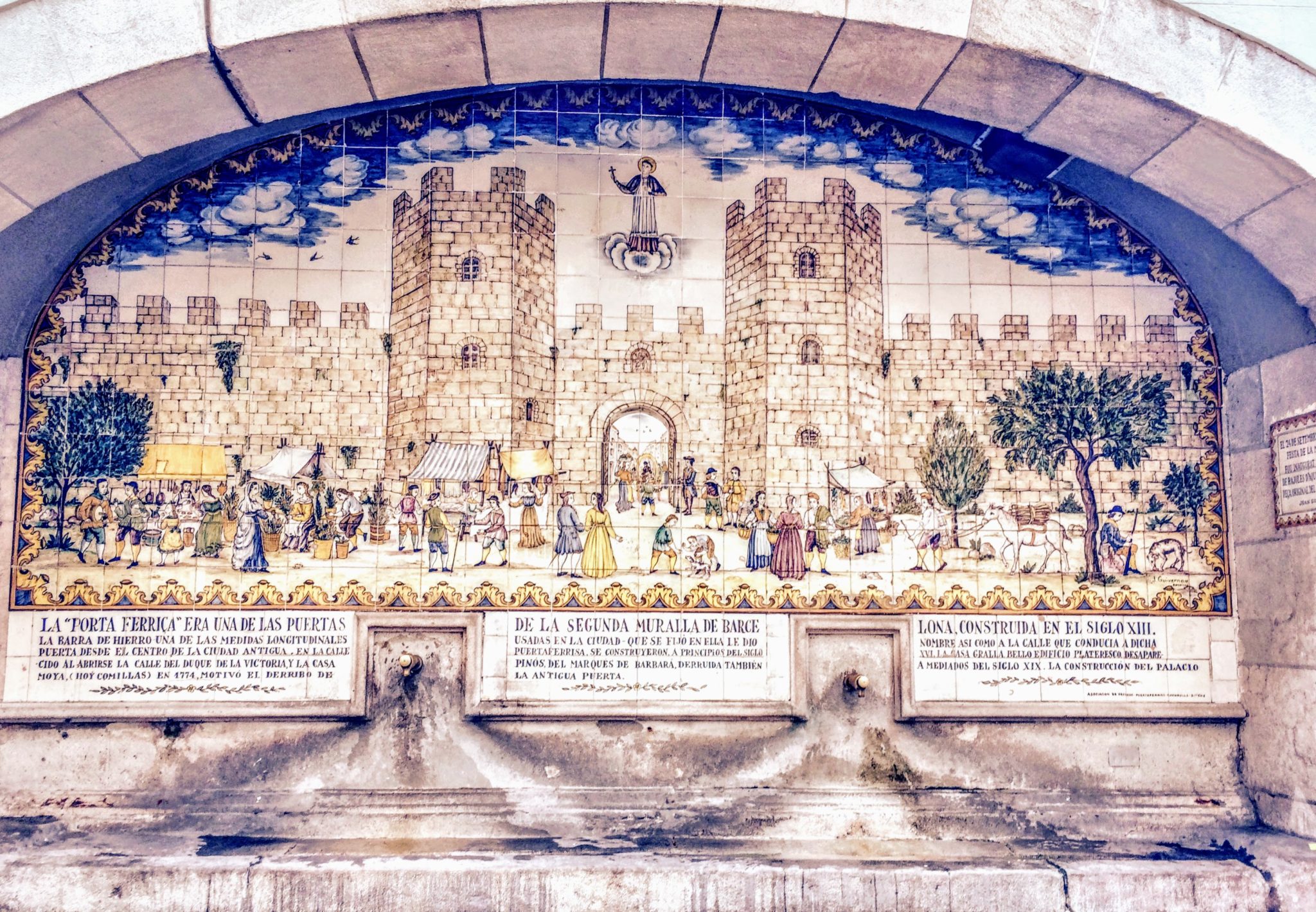
One of my favorite of Barcelona’s “little things”: the Portaferrissa fountain in the Barri Gòtic. Originally built by a gate in one of medieval Barcelona’s inner walls (porta ferrissa means “iron gate”), it was moved to its present position just off the Rambla in 1680.
The airy boulevards of the Eixample—the modern, grid-planned city extension—reminded me of Paris. Except that Paris, grand and beautiful as it is, isn’t awash in stunning modernimse architecture and decor. And I don’t just mean Gaudí’s masterpieces, such as Casa Milà—but less obvious elements such as the wrought iron streetlights on the major thoroughfare Passeig de Gràcia, anchored to the street by mosaic-tiled benches and topped with delicate-looking iron bats—an old Catalonian heraldic symbol.
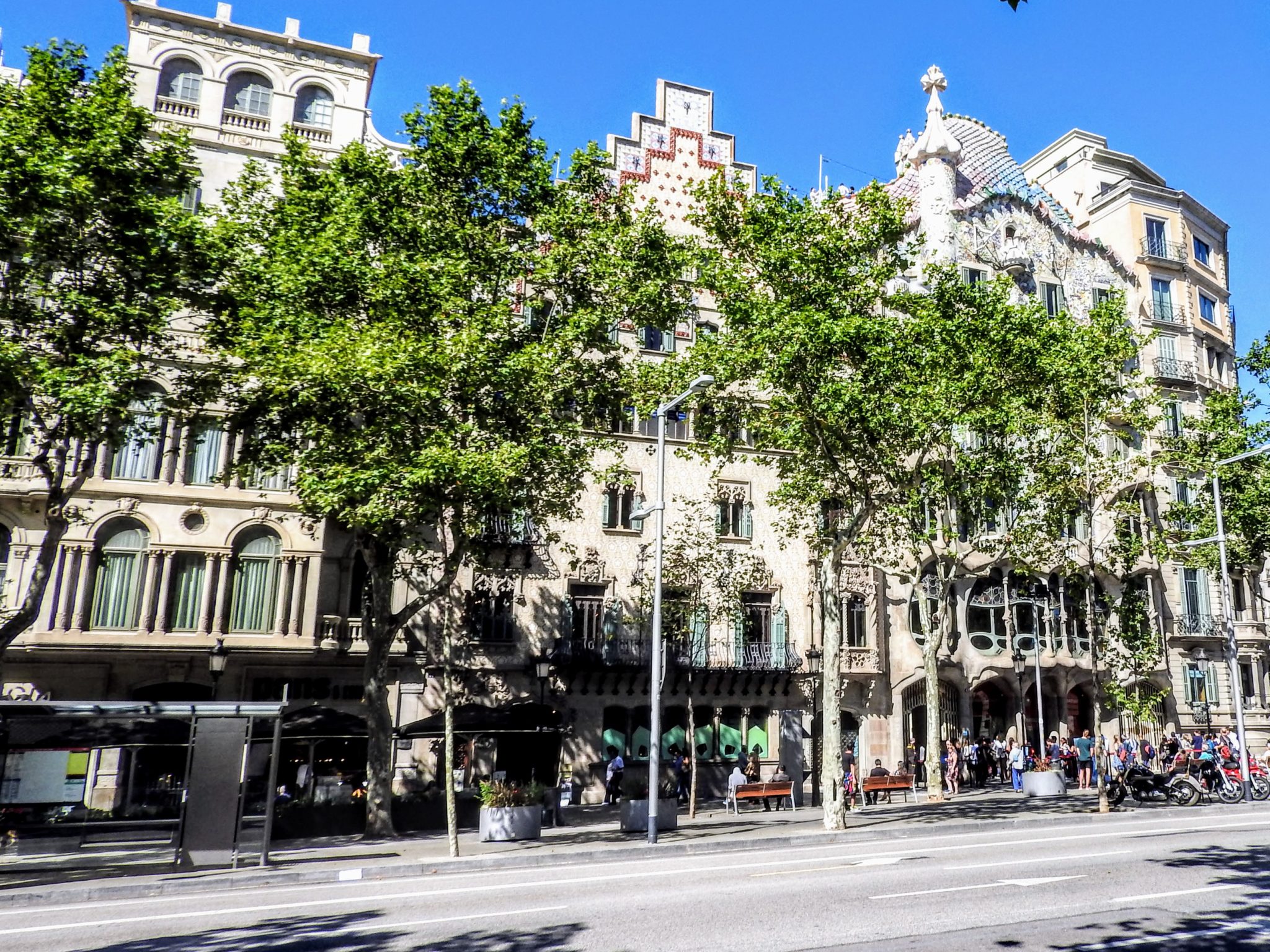
The “Block of Discord”–Gaudí buildings along the Passeig de Gràcia. I love Art Nouveau (or modernisme, as it’s known in Catalan) and would have cried if I’d missed this!
I was in Barcelona in mid-June, so there were plenty of tourist crowds, but it wasn’t that difficult to find some peace and quiet. The city rewards the early riser; take advantage of the fact Barcelona is a city of night owls and get up and out early in the morning. Sure, nothing’s open yet, but the shops and museums and cafes can wait. Taking the time to savor the stillness and appreciate the beauty around you is a remarkable experience in itself.
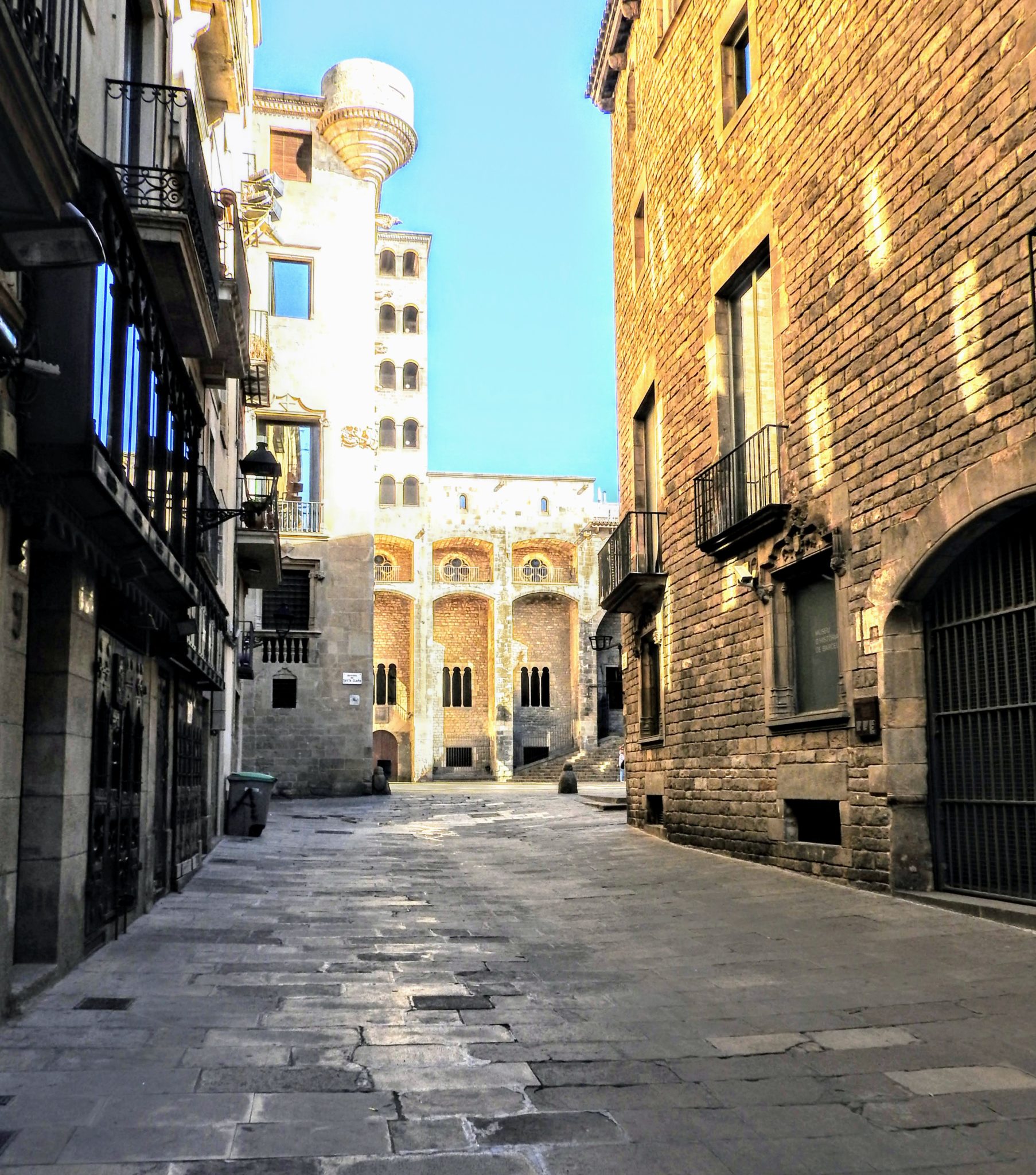
A narrow street in the Barri Gòtic and, below, a view of the old cathedral square, both almost deserted at 9 on a Sunday morning.
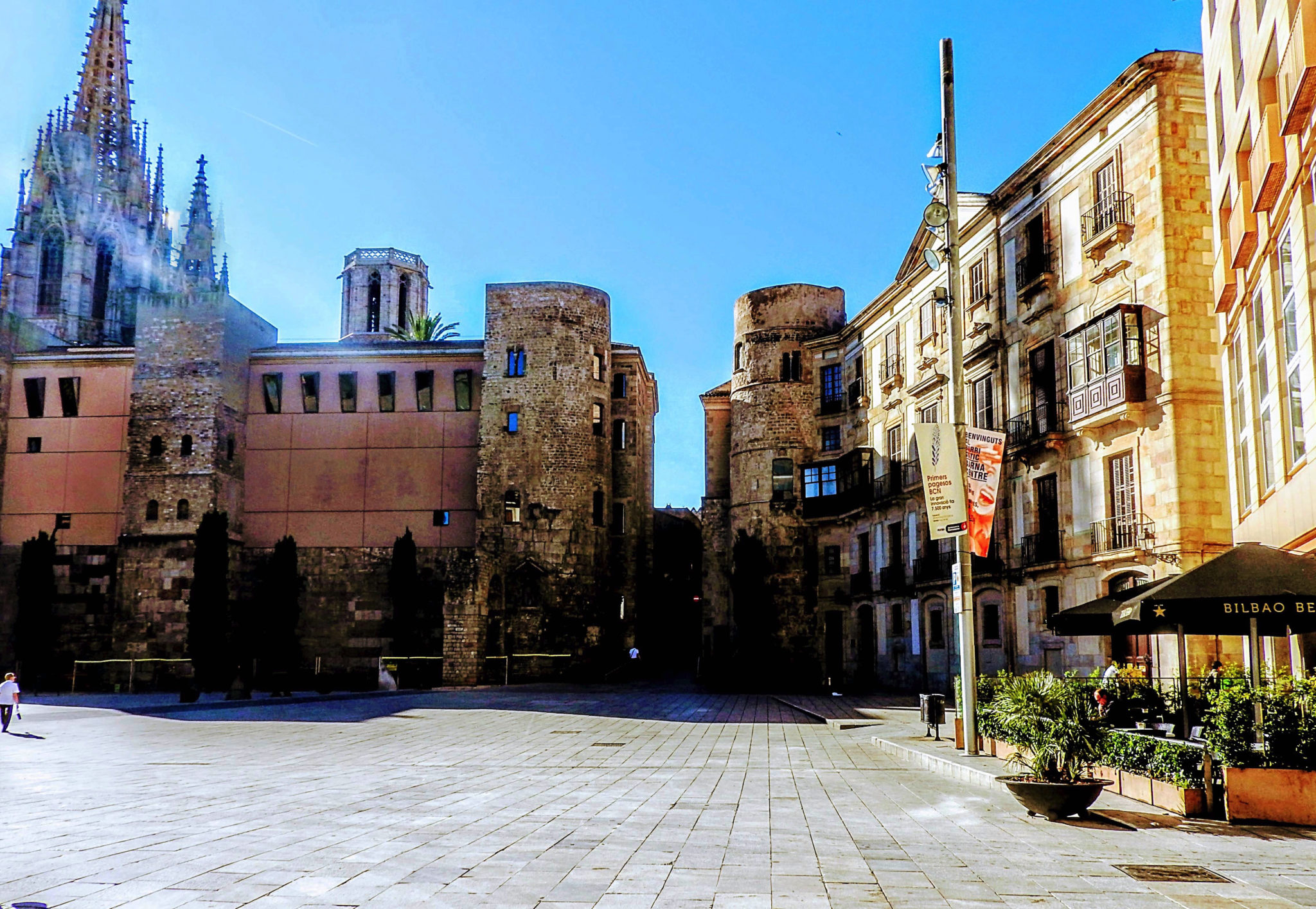
None of this is to say that Barcelona’s reputation as a pickpocket haven is undeserved. While nothing happened to me (I took the same precautions I take in any city, but I think luck is the deciding factor), plenty of other people have had bad experiences and those experiences absolutely leave a mark. My comments are not meant in any way to denigrate anyone who has run into trouble there. But pickpockets flourish in large cities all over the world, while Barcelona’s reputation seems to have taken on a life of its own.
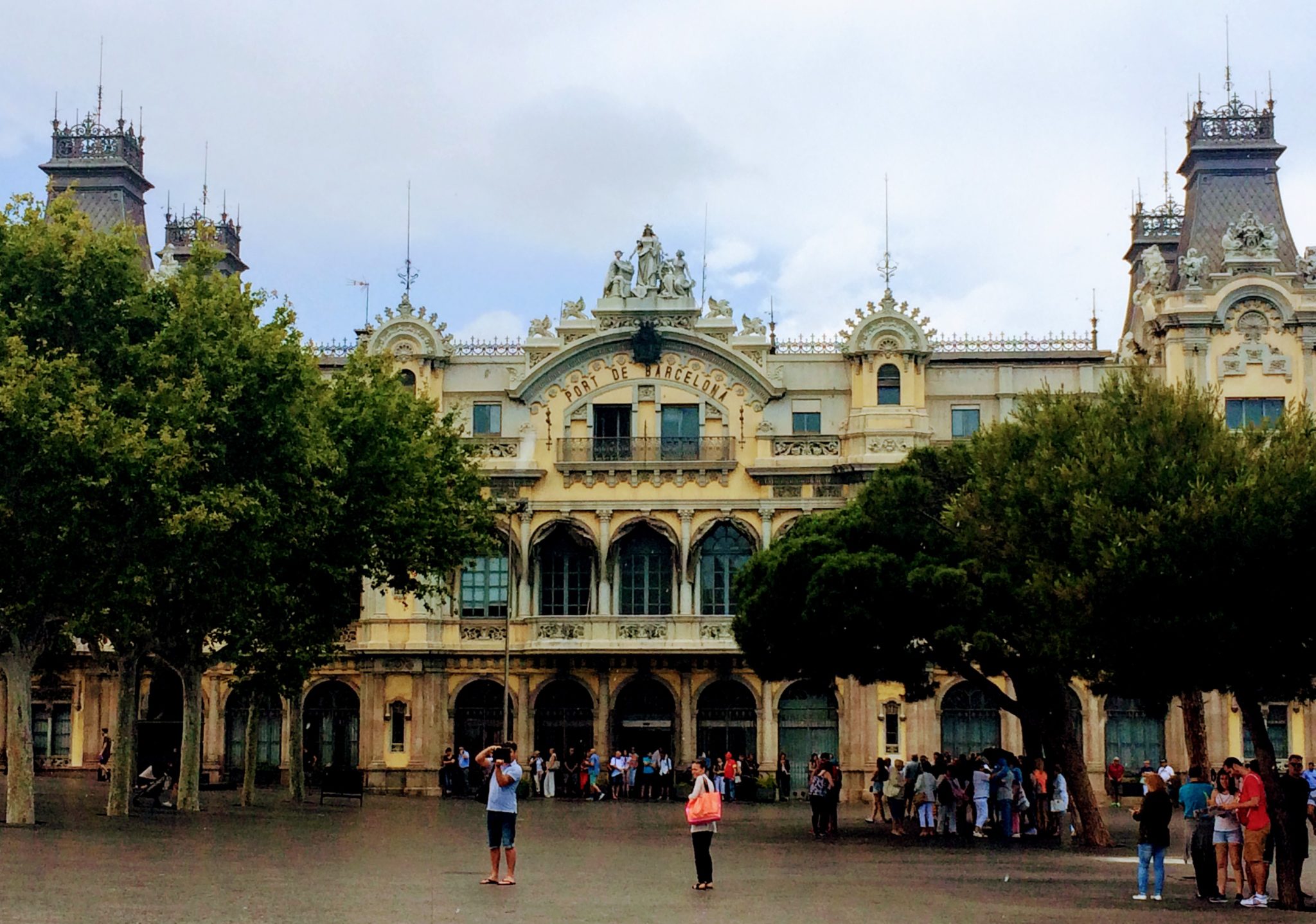
The neoclassical old customs house–now the Barcelona port authority–at the end of La Rambla, by the harbor. This isn’t an area I’d wander alone at night, but it’s fine during the day. And the building is fun, too. It was built around 1900 and contains allegorical paintings of Don Quixote “visiting” Barcelona.
There is no grand moral to this story. But I am filing it away as one of my own little cautionary tales. Compulsive planner (and occasionally anxious over-thinker) that I am, I spend a ton of time researching my destinations…and that is a good thing. But I need to remember to balance other people’s advice against my own instincts and experiences.
Without being reckless (not likely, reckless is not my thing), I need to trust myself and have my own experiences. Maybe they’ll be good, maybe they’ll be bad, but they’ll be my own.
On the plus side, my way-too-short trip to Barcelona simply means I’ll have to go back…
What about you? Have you ever been so unnerved by a place’s reputation that you altered your travel plans? Was it the right decision, or not?


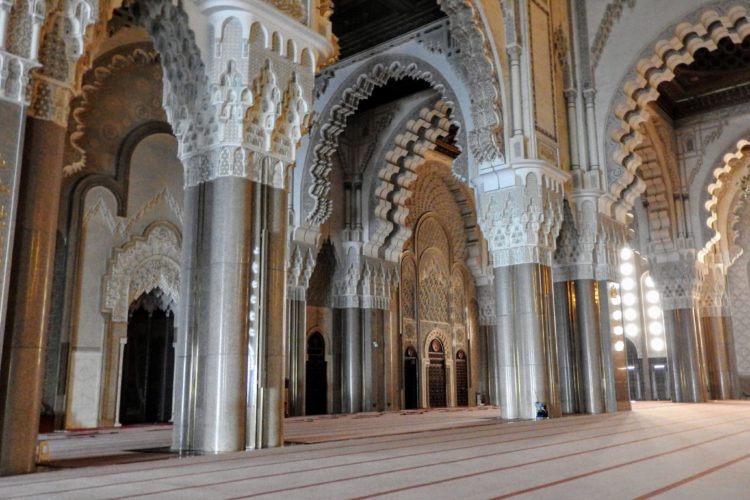
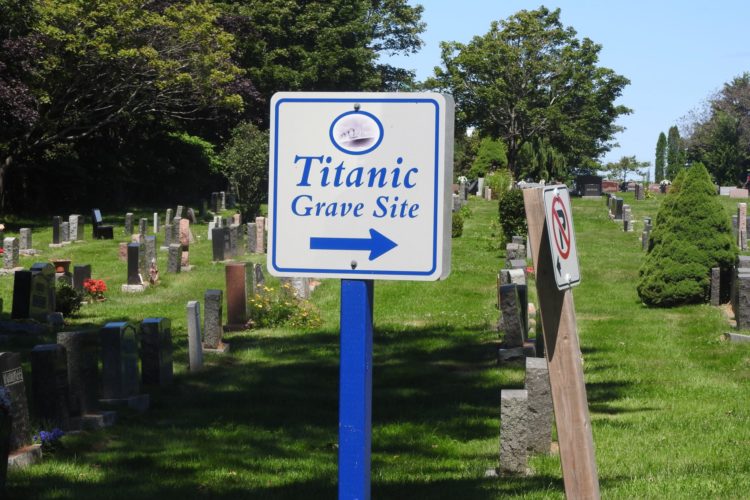
In my own experience, and in addition to the common-sense precautions that you wisely identify, the easiest way to avoid harrassment is to mitigate how touristy you look. For Americans—and this is a generalization, but one that bears out reliably if not universally—this means dressing a bit more formally than we typically would for travel. Sneakers and parkas are undeniably comfortable AND practical, but in cosmopolitan city centers where pickpocketing is an industry, that kind of athleisure wear is immediate shorthand that says “I am out of place and almost certainly have valuables (whether cash or “just” a passport) on me.” I’ll never advocate for three-inch heels and a pencil skirt when touring, but stylish walking shoes and a couple of light sweaters do scramble the most overt signs that one is new in town.
Hi Sarah,
I absolutely agree about making an effort to blend in. I think even if one isn’t completely successful (for example, I have no illusions that I am ever actually taken for a Parisian), the effort communicates a certain awareness, which might also deter a lot of petty thieves.